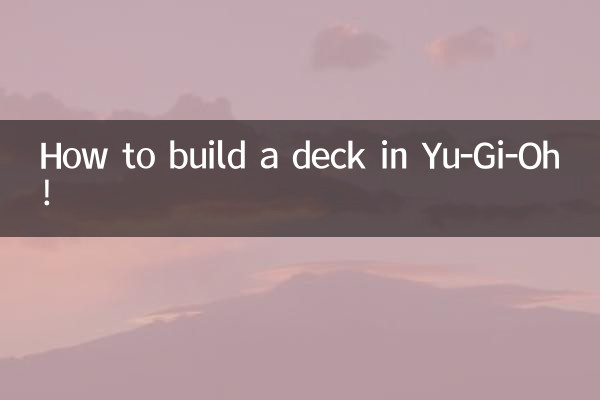How to build a deck in Yu-Gi-Oh!
In Yu-Gi-Oh!, the classic card game, building a powerful deck is the key to victory. Whether you are a novice or an experienced player, card building requires certain strategies and skills. This article will combine the hot topics and hot content on the Internet in the past 10 days to provide you with a detailed analysis of how to build an efficient deck.
1. Trend analysis of popular decks

Based on recent player discussions and match data, here are the most popular deck types currently:
| deck type | core cards | winning rate |
|---|---|---|
| Phantom Knights | Phantom Knights Broken Gloves, Phantom Knights Rusty Battle Ax | 58% |
| electronic dragon | Electronic dragon, electronic dragon core | 55% |
| black magician | Black Magician, Dark Magician Girl | 52% |
2. Basic principles of card grouping
1.Clarify the theme of the deck: Choose a clear theme or tactical core, such as "Fusion Summon", "Synchrony Summon" or "XYZ Summon". A deck with a clear theme is more likely to create synergy.
2.Balance the deck proportions: Usually, the composition ratio of a deck is:
| card type | Recommended quantity |
|---|---|
| monster card | 15-20 photos |
| magic card | 10-15 pictures |
| Trap card | 5-10 pictures |
3.Add universal card: Universal cards can be used in a variety of situations, such as "Gray Flow Rei", "Proliferated G", etc.
3. Examples of popular deck construction
Take the currently popularPhantom KnightsTake the deck as an example. The following is its core construction:
| card name | Quantity | function |
|---|---|---|
| Phantom Knights Broken Gloves | 3 | core expansion point |
| Phantom Knights Rusted Battle Ax | 3 | Provide additional resources |
| gray flow beauty | 2 | interfere with the opponent |
4. Common mistakes and improvement suggestions
1.The deck is too bloated: Avoid adding too many irrelevant cards and keep the deck streamlined (about 40 cards).
2.lack of defense: Appropriately add trap cards or quick-attack magic cards to deal with the opponent's offensive.
3.Ignore environmental changes: Regularly pay attention to the release of new cards and adjustments to the banned and restricted card list, and optimize the card group in a timely manner.
5. Summary
Building a strong deck requires continuous learning and practice. By analyzing popular decks, balancing deck proportions, and avoiding common mistakes, you can gradually improve your deck building skills. I hope this article can provide you with valuable reference!

check the details

check the details